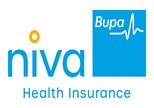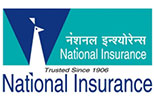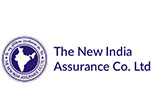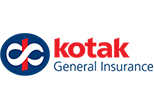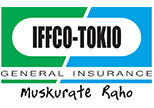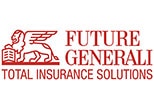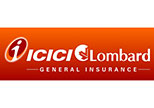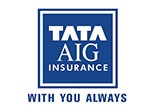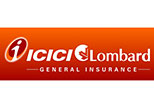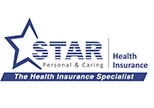What is Health Insurance Risk Adjustment? Impact On Premium
Health insurance risk adjustment is very crucial for a well-maintained healthcare system. It helps estimate the cost of treating a patient in a year based on their health. It's a way to ensure that the doctor or health insurance companies gets paid fairly for the patient they care for. As all the patient's conditions differ, some need extra care, and others need less care. Risk adjustment in healthcare helps to maintain the equilibrium of each patient’s care according to their needs. Read this article to learn more about how risk adjustment works, its objectives, different models, factors considered in risk adjustment, etc.
Table of Contents
How does Risk Adjustment Work?
The risk adjustment in the healthcare process starts with estimating the risk score. The risk score defines the expenses needed according to an individual's health conditions. Health Insurance plans divide the amounts according to the risk score. Patients with high risk receive capitated care payments like a healthier one. This helps stabilise premiums and ensure coverage for high-risk populations. This ensures fair health management and does not discriminate against patients based on their health status.
Objectives of Risk Adjustment In Health Insurance
The objectives in healthcare risk management are numerous; let's discuss the objectives-
1. Fair Distribution
Risk management in healthcare offers a fair distribution of benefits among all patients. It encourages insurers to adjust costs based on the value and efficiency of their plans, not on their health status. It helps to maintain a fair distribution among all patients.
2. Stabilise Premiums
Risk adjustments in health insurance also help policyholders get stabilised premium benefits. Balancing payments according to the risk profiles helps prevent drastic fluctuations in premiums. Low- and high-risk individuals enjoy healthcare services with the risk adjustment system.
3. Ensure Adequate Funding
High-risk patients often struggle to get adequate funds to meet their health needs. However, risk adjustment in health insurance ensures sicker patients receive appropriate compensation for all their medical costs. It allows them to get necessary care without unsustainable losses.
Health Insurance Risk Adjustment Models

Risk adjustment models are essential to predicting healthcare costs based on patient health conditions. These tools help compensate patients fairly according to their risk profiles. Let’s discuss the models-
1. HHS Risk Adjustment Model:-
The HHS (Health and Human Services) model is designed for policymakers under the Affordable Care Act (ACA). Through this model, they use diagnosis reports from the current year to predict healthcare costs for the same year.
- It uses a variety of demographic factors like age and gender, and diagnoses are coded using ICD-10.
- It uses specific hierarchical condition categories that reflect the expected healthcare costs.
- It helps to adjust premiums based on the health status of patients.
2. HCC Risk Adjustment Model:-
The Medicare Advantage program uses the HCC (Hierarchical Condition Categories) model. In this model, policymakers use current diagnoses to predict the costs for the following year.
- It differentiates patients between community and institutional risk segments. Undertake risk adjustments based on living conditions.
- It includes multiple chronic conditions that significantly impact healthcare costs, like diabetes, heart disease, and chronic kidney disease.
- In this model, they estimate the cost using a Risk Adjustment Factor (RAF) score. This combined demographic data helps estimate future healthcare expenses.
Factors Considered in Risk Adjustment
The risk adjustment system follows some factors to estimate the cost of healthcare. Here are some factors to consider in risk adjustment-
- Age
- Gender
- Family
- Lifestyle
- Medical history
- Driving record
- Medicaid status
- Diagnoses data
- Geographic region
- Original Medicare entitlement
Insurers use these factors to calculate the RAF score according to the HCC ICD10 codes for the billing process. This helps distribute the funds among all the policyholders with discriminatory medical statuses.
To know more about the risk adjustment factors, you can contact an InsuranceDekho relationship manager via email at support@insurancedekho.com or on call at +91-755 1196 989.
Impact on Insurance Premiums
Risk management plays a crucial role in determining insurance premiums, according to the ACA in the USA, and is not applicable in India. However, this ensures all insurance takers receive an adequate amount for their healthcare costs, considering their health conditions, without drastic changes in the premiums.
- It helps stabilise premiums by redistributing funds among policyholders according to their risk profiles. ACA, including guaranteed issues and modified community ratings, necessitates it for maintaining market stability.
- It increases the engagement of comprehensive coverage. With the risk management facility, people are more likely to take better health care plans, which helps insurance companies redistribute funds better.
- As the risk score of the policyholders estimates the coverage, risk management helps to maintain the premiums. It helps to decrease the viability of the premiums.
FAQs
Ques 1. What factors impact the risk of insurance?
Ans. The factors that impact the risk of insurance are health, lifestyle, family medical history, driving record, alcohol consumption or smoking, etc.
Ques 2. How does risk adjustment contribute to fair premium pricing?
Ans. Risk adjustment helps ensure doctors and other health providers. They provide providers who get paid more for high-risk patients than low-risk patients.
Ques 3. What is risk adjustment in HCC?
Ans. The HCC is a risk adjustment model that helps to calculate risk scores. It uses diagnoses of the current year to predict costs for that same period.
Ques 4. What is the risk-adjusted rate in healthcare?
Ans. A risk-adjusted mortality rate indicates the mortality rate of the policyholders. It's used to assess the performance of institutions, doctors, procedures, healthcare systems, etc.


















